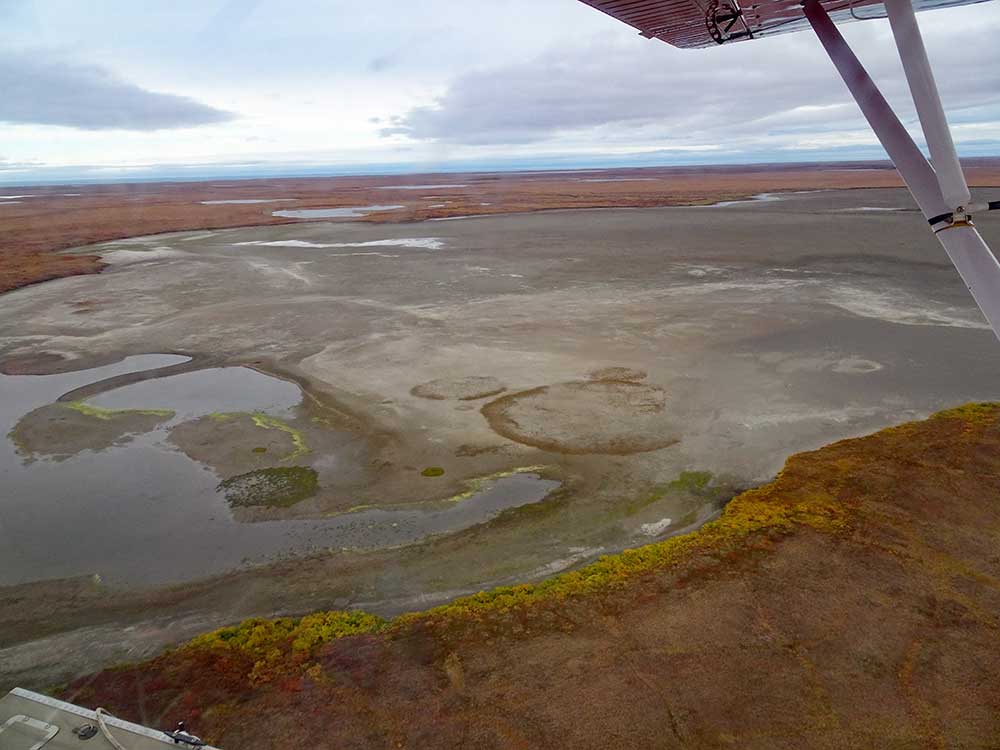News Release

NPS/David Swanson
News Release Date: August 6, 2019
Contact: David Swanson
The Arctic parks in Alaska are losing lake habitat important to birds and other species, even though precipitation has remained largely the same over time. Like many changes in the Arctic, the disappearance of lakes has been accelerated by warming temperatures.
Much of the Arctic is underlain by permafrost, continuously frozen soil. As the ground warms, ice in the ground melts and the surface subsides. While subsidence along a lakeshore can increase the size of lakes, and thus the amount of water available for habitat, it can also create new pathways for water to run out of a lake. In areas where there is more ice in the permafrost, and in years with heavy snowfall, high water levels in the spring can erode a new outlet channel, causing all the water to drain (sometimes suddenly) and result in the disappearance of lakes and loss of habitat.
This paper looks at trends (from 1984-2018) in sites across Alaska's Arctic parks. The author found that 2005-2007 experienced a major episode of lake drainages, following very warm years (2003-2004). This was exceeded, however, by a recent lake drainage event that started in the summer of 2018 after another series of record-warm years since 2014. To put it in perspective, from 2000-2017, the average rate of water loss was about 700 hectares (1,730 acres) per decade; 760 hectares (1,878 acres) of lake surface disappeared in 2018 alone.
One reason we are concerned about this is that larger lakes in the Arctic are important habitat for Yellow-billed and Pacific Loons. The Yellow-billed Loon is a rare species in North America, so any additional habitat loss could impact their numbers. In addition, the loss of lakes will shift those ecosystems into meadows and shrubland, creating further ecological changes.
For more information, see:
- Lost Arctic Lakes
- Loons without Lakes
- Thermokarst and precipitation drive changes in the area of lakes and ponds in the national parks of northwestern Alaska, 1984-2018. Arctic, Antactic, and Alpine Research (2019)
Last updated: November 25, 2020
